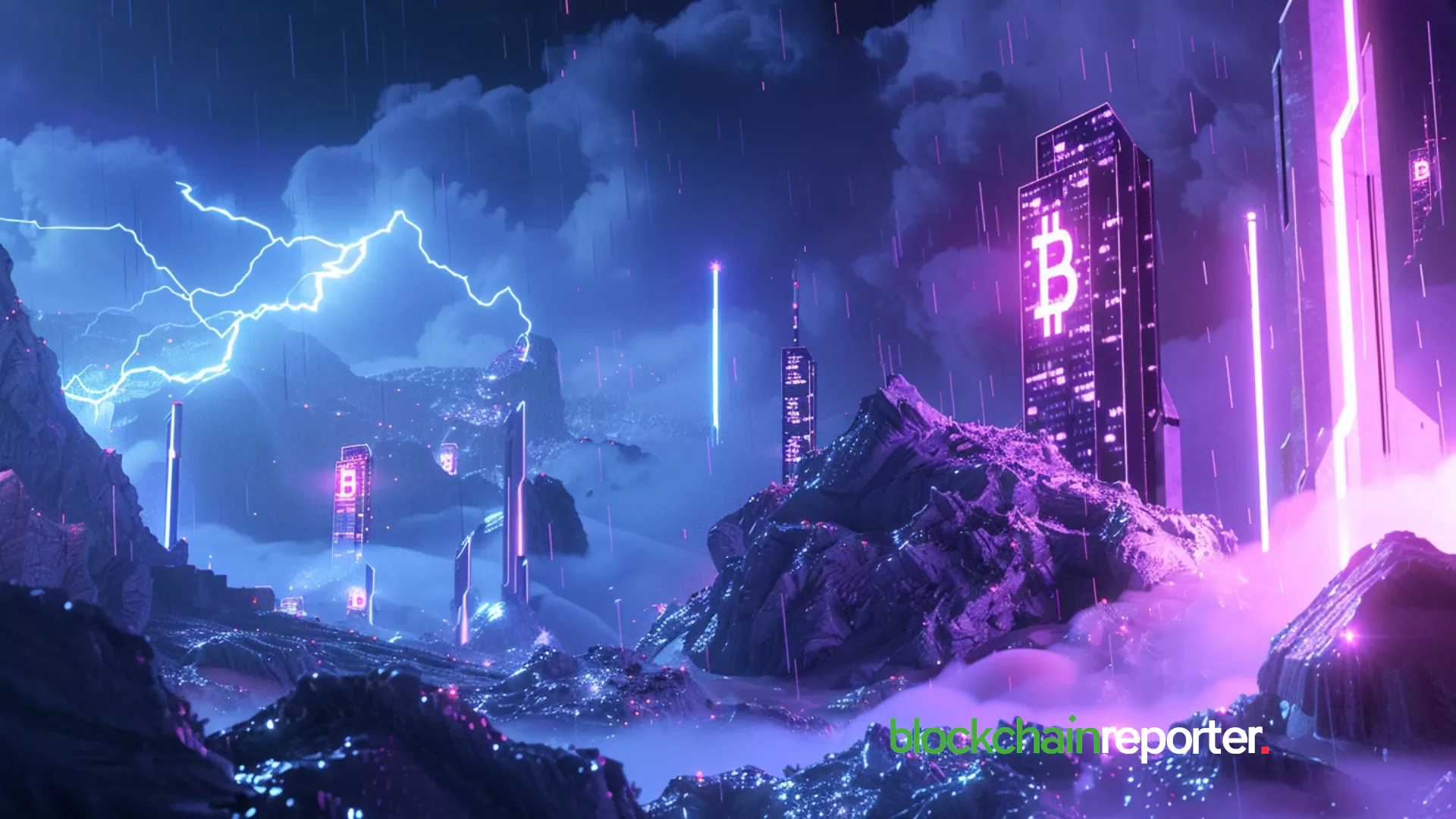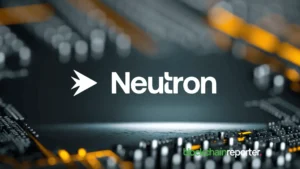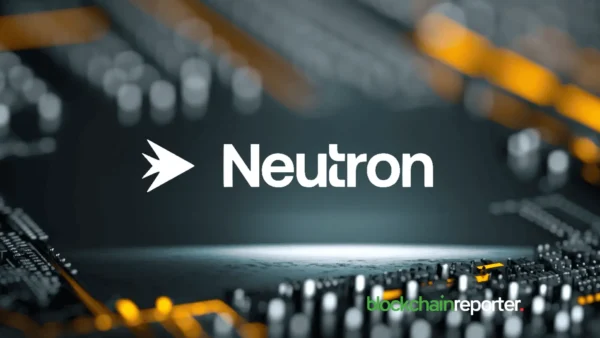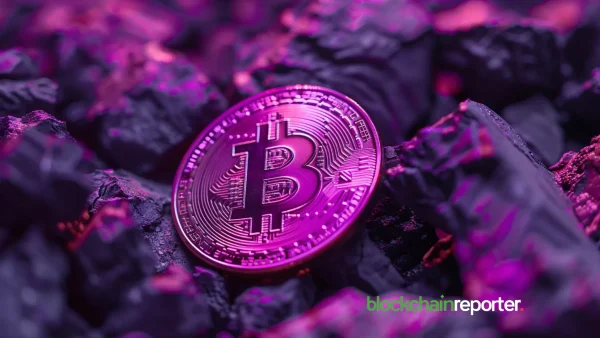
- 1. What Is Crypto Mining?
- 2. Operation Of Crypto Mining
- 3. Crypto Mining Through GPUs
- 4. Well-Known GPUs For Crypto Mining
- 5. What Is A Mining Pool
- 6. Bitcoin Cloud Mining
- 7. Is Bitcoin Mining Productive?
- 8. What Does Proof Of Work Mean?
- 9. Bitcoin Mining Difficulty
- 10. The Calculation Of Difficulty
- 11. The Block Reward
- 12. Double-Spending
- 13. Proof of Stake Mining
- 14. Hardware Requirements for Mining
- 15. Conclusion
- 16. Key Takeaways
We all are well aware of how new currency notes are minted by central banks but a majority of people don’t have proper knowledge about the method through which new Bitcoin (digital currency) is added to circulation on the blockchain. The process through which a new Bitcoin is created is called Bitcoin Mining which is an arduous task. For mining Bitcoin, sophisticated and heavy hardware is used that can solve complex mathematical problems. A computer that succeeds in solving the problem in the shortest time receives the next block and the process begins once again.
What Is Crypto Mining?
To grasp the idea completely, understanding blockchain is necessary. Bitcoin is based on blockchain technology because it is a decentralized digital currency. Its transactions are required to be verified by network nodes through encryption and then recorded in a public ledger. This public ledger is known as a blockchain and once a computer receives a block during mining, it is updated on the blockchain database for the public.
Operation Of Crypto Mining
The process of crypto mining comprises solving complicated mathematical equations with the utilization of powerful computers after which a reward is received by the miners as a proportion of the same currency being mined (whether it is Bitcoin or some other). Crypto mining has several types which are based on the equipment that is used for solving the respective cryptographic equations.
At first, the procedure of mining takes into account an application-specific integrated circuit (or ASIC) playing the role of a central processing unit however at present it is possible via a graphical processing unit (GPU) as well. Computers are utilized by the miners to calculate an exclusive number normally called the ‘nonce’ (number only used once). While mining crypto, a nonce is plugged by the miners into a hash function to be calculated.
Because of the randomness of the respective number, the miners can’t guess it hence they require to perform calculations for thousand times to reach the actual number and this process can be carried out quickly if the processors doing it are powerful. That is the point where a significant position is occupied by GPUs.
Crypto Mining Through GPUs
GPUs comprise several arithmetic units to do mathematical computations in every small fraction of time for the multiplication of the results. In addition to this, they decode diverse hashes recurrently by modifying one of the digits each time to get to the exact answer. In general, the categorization of GPUs is done according to the hash rates, power consumption, as well as heat produced by them. GPUs that have a better functionality are those that can make up to 7 dollars during an average time of up to 24 hours usually in the case of 0.01 per kWh cost of electricity. Conjugating more than one GPU attached to one rig improves the profits to a considerable extent.
Formerly, only gamers were the users of GPUs to render the 3D shapes and graphics as complex mathematical calculations can be done through GPUs simultaneously. Nonetheless these days, the situation is the other way round as gaming computers are being utilized for mining cryptocurrencies due to their efficient performance as many processing cores operate within them. Thus, in GPU-based crypto mining, GPUs of gaming computers are used.
Specifically, in crypto mining, there is a requirement for a blockchain on which the coin being mined will be built, permitting proof-of-work (PoW) mining. The prominent crypto blockchain network on which crypto mining can be done include Bitcoin, Dogecoin, Ethereum, Monero, and Ripple among others.
Well-Known GPUs For Crypto Mining
In the market, there are numerous graphics processing units available. Some of them are specific for video rendering whereas the others deal with gaming. The cards specified for gaming are considered to be outstanding for mining crypto as their performance is far superior to the others. Ever since the start of crypto mining, GPUs are being manufactured on the behalf of the firms like AMD and NVidia for this purpose. As the users suggest, NVidia GeForce GTX 1070 is the most proficient GPU for crypto mining at this time.
In previous times, mining of cryptocurrency was possible on an individual basis however presently it is impossible because of the mounting interest rate as well as the decrease in the rewards. Apart from this, you may not be able to ever mine even one Bitcoin (BTC) on a personal laptop. If GPU used by you is based on state-of-the-art technology, even then up to 3 years would be wasted to mine just 1 BTC on that. These are the things compelling the miners to conduct crypto mining in shared pools in which the computational powers are combined to generate rapid results. After the completion of the mining process, the members distribute the earned reward among themselves according to their efforts.
What Is A Mining Pool
The Bitcoin miners who do not have enough mining power to solve the blocks individually and as a result are experiencing substantial losses have the option to be a part of some mining pool. Mining pools are run and organized on the behalf of 3rd parties. In a mining pool, there is a team of miners who coordinate with each other to collectively execute the task of crypto mining. Being in a pool is much more advantageous in comparison with personal mining as in a pool the respective activity can be performed swiftly. When the mining is done, the reward is dispersed among the miners per their participation in the mining process.
Bitcoin Cloud Mining
A decade ago, when Bitcoin mining was rising, a great number of people – because of several reasons – could not participate in the BTC-mining bandwagon. They kept on trying for getting into this sector and cloud mining came into the scene for the provision of benefits to such miners. Cloud mining is labeled as a procedure of mining Bitcoin while utilizing a data center that offers shared processing energy. in this way, the consumer is capable of mining BTC without requiring to increase the level of hardware in his possession for mining.
In other words, Bitcoin cloud mining permits the customers to mine Bitcoin with no hardware investments. That is why this mode of mining is more alluring and a large number of miners are moving toward this comfortable mining.
Is Bitcoin Mining Productive?
Crypto mining is time-consuming and costly but rewarding at the same time as well. During mining, so much electricity is consumed that China initiated a huge crackdown on crypto miners when the government put a mining ban in 2021. Before this ban, China was the largest crypto mining hub but now this title belongs to the US. The rewards of crypto mining are so catchy that Chinese miners have not refrained and now China has once again claimed the second spot among the largest crypto mining countries. The reason is that for mining each block, miners receive 6.25 Bitcoin which according to today’s price makes 189,375 USD. Approximately 144 new blocks are mined every day.
The reward for mining Bitcoin is a great incentive that motivates more and more people to join the mining industry. Apart from this, Bitcoin is highly lucrative as well and this is the main reason behind people’s interest in crypto mining.
What Does Proof Of Work Mean?
A proof of work is known as a portion of data to be produced with difficulty – due to time consumption or high cost – to fulfill some particular requirements. It ought to be trivial to examine if the said requirements are accomplished by it. The procedure of manufacturing proof of work can be a random one with less probability, hence a great number of trial-and-error sequences are required generally in advance of an effective proof of work’s generation. The proof of work that Bitcoin utilizes is Hashcash.
Bitcoin Mining Difficulty
In the terms of Bitcoin Mining Difficulty, there are a couple of factors that need to be conscious of including the computationally-difficult problem as well as the Bitcoin mining difficulty Metric. These aspects are described as follows.
Mining a block on the Bitcoin blockchain is difficult since the header’s hash SHA-256 at a block needs to be equal to or less than the target of the block so that the network may approve it. The respective issue can be solved for elaboration purposes. A block’s hash requires to begin with a specific number consisting of zeros. In the calculation of hash, there is probability of several zeros is very less, so it is inevitable to make a lot of effort in this respect. To create an exclusive hash in each round, the increment of a nonce takes place.
The other significant thing in Bitcoin mining is the Bitcoin mining difficulty which is known as determining the difficulty level of locating a unique block in comparison to the easiest way of doing that. It is calculated for another time after every 2,016 blocks (or nearly a couple of weeks). The respective block interval of 2,016 is known as the difficulty epoch while the network examines if the miners’ operations for a previous couple of weeks have increased or decreased the time taken by the mining of a unique block. If the taken time is less than 10 minutes, then it can be said that an increase will be witnessed in the mining difficulty. In the opposite situation, when more than 10 minutes are taken for the mining of a unique block, then the mining difficulty can be said to be decreased.
The Calculation Of Difficulty
The calculation of mining difficulty is done through diverse formulas. But the most prominent and frequently used one is “Difficulty Level = Difficulty Target/Current Target.” It is significant to be noted that the Difficulty Target comprises the target hash’s hexadecimal notation and the difficulty thereof is 1. On the other hand, the most recent transactions’ block has the current target as its target hash. When the division of a couple of values is done, it provides a whole number denoting the Bitcoin mining’s difficulty level. For example, if 24 trillion is the answer, then the miner ought to generate nearly 24T hashes in advance of getting to the required hash. Yes, sometimes the miners can get lucky and may find the required hash in fewer guesses.
The Block Reward
When a Bitcoin miner discovers a block, a reward is delivered in return for doing this in Bitcoins, as it is a consensus on the network. At present, 25 Bitcoin is the bounty and on every interval of 210, 000 blocks, this amount will halve. Additionally, the fees recompensed by the consumers over sending the transfers are also provided to the miners. The fee counts to be a prize given to the miners for incorporating the transfer in the block thereof. A noteworthy position will be occupied by the fees in the percentage of the income acquired by the miners.
By 2040, a significant decrement will occur in the block rewards and it will come down to nearly 0.2 BTC, leaving just 80,000 BTCs out of the cumulative 21 million. The process of mining will just be accomplished efficiently following 2140 as the last Bitcoin is being slowly mined. Even in the case of a reduction in the block reward with time, the mounting prices of Bitcoin have effectively compensated the miners throughout the previous half.
Though this is not sufficient to ensure the results to be seen in the future, the miners are more than confident in the prospects of the future. Considerable support is provided by the community to the present mining operations, and no strategies are undertaken to be phased as similar to Ethereum (another crypto coin that can be mined). The private miners of Bitcoin can be sure that a profit will be provided by the platform in the case of meeting the required conditions.
Double-Spending
An issue that has emerged recently, deals with duping of digital information on behalf of shrewd people having considerable knowledge about blockchain space. In this way, one Bitcoin token is utilized two times by its owner. To tackle this problem, the BTC miners analyze every transfer to find out if the use of any of the BTC tokens has been done twice.
On the accomplishment of the validation of the Bitcoin transfers having a worth of up to 1MB – also considered to be a Block – a specific number of BTC tokens are provided to the miners per the magnitude of the data that the transfer utilized. However, the compensation will not be provided to every miner who validates the transfers and just the initial miners will be offered this benefit on solving the complicated problem.
Proof of Stake Mining
Another type of crypto mining is based on the Proof of Stake (PoS) consensus mechanism in which the validation of the unique block transfer is performed per the number of coins staked by the miner. This signifies that no computer rigs are required to enhance the mining power. In this method of mining, consumers need to manufacture a node that becomes responsible for the reliability as well as the correctness of the distributed ledger and data storage. To ensure the trustworthiness thereof, this is the requirement for the node to lock away a particular amount in crypto. This procedure of locking crypto is known as staking.
The miner will choose an algorithm to guarantee that the selected node has more amount of coins – as compared with the others – staked on it. The job is to examine as well as get the exclusive block incorporated into the chain. As is the case with proof of work, the rewards are provided to the nodes utilized in proof of stake to carry on the staking process.
Hardware Requirements for Mining
As mentioned above, the most commonly used hardware for Bitcoin mining is known as application-specific integrated circuits (ASICs). The average cost for an ASIC is usually 10k USD. Although ASICs are still in use they have been criticized severely for the huge consumption of electricity. According to research reports, 2 ASICs can consume electricity equivalent to 1 million PlayStation 3 devices. Approximately 144 terawatt-hours of electricity are being used every year for Bitcoin mining.
Modern miners are shifting towards GPU crypto mining for some clear advantages. GPUs are fast and efficient as compared to ASICs and on top of everything, consume less power. On average, a good GPU such as Nvidia GeForce 3060 can earn users 7 dollars every 24 hours.
Although the hardware is a must for mining but it is of no use without mining software. Advanced mining software is a primary requirement of GPUs. Some of the good mining software are Claymore Miner, WildRig Multi Miner, and KawPow Miner.
Conclusion
The entirety of the above-made discussion brings it to the front that Bitcoin mining is quite similar to the rest of the businesses. I expect that with this guide you are in a better position to decide on your plans regarding Bitcoin mining. In my recommendation, you should move toward mining Bitcoin through some already established pool as you will get the benefits that cannot be availed while mining solely, taking into account the hardware upgrades and other such problems.
The private miners are in constant trouble of keeping on getting the latest hardware as the mining requirements increase continuously, with the growing complexity of the calculations that require to be solved to reward the miners. Another reason for persuading you to move toward cloud mining is that the miner will be rewarded with a mining donation even if the required hash is not found by the mining device for the creation of the block. The end note is that mining Bitcoin for free is very hard.
Key Takeaways
The process of creating a new Bitcoin is painstaking but productive as well and the process is known as ‘mining’.
ASICs and GPUs can be used to mine Bitcoin.
Bitcoin mining is a better option compared to purchasing Bitcoin.
Frequently Asked Questions
What is crypto mining?
Crypto mining is the process of validating and recording transactions on a blockchain by solving complex mathematical problems. In return, miners are rewarded with newly created digital currency, such as Bitcoin.
How does Bitcoin mining work?
Bitcoin mining involves powerful computers solving cryptographic puzzles to validate transaction blocks. The first computer to solve the problem adds the new block to the blockchain and receives a block reward in Bitcoin.
What equipment is used for mining?
The most common equipment includes ASICs (Application-Specific Integrated Circuits) for Bitcoin mining and GPUs (Graphics Processing Units) for other cryptocurrencies. ASICs are highly efficient but consume more electricity, while GPUs are more versatile and cost-effective.
What is a mining pool?
A mining pool is a group of miners who combine their computing power to increase the chances of solving a block. The rewards are then shared proportionally based on each miner’s contribution.
What is Bitcoin cloud mining?
Cloud mining allows users to mine Bitcoin using shared computing power from a remote data center. This eliminates the need for personal hardware, making mining more accessible and less resource-intensive.







